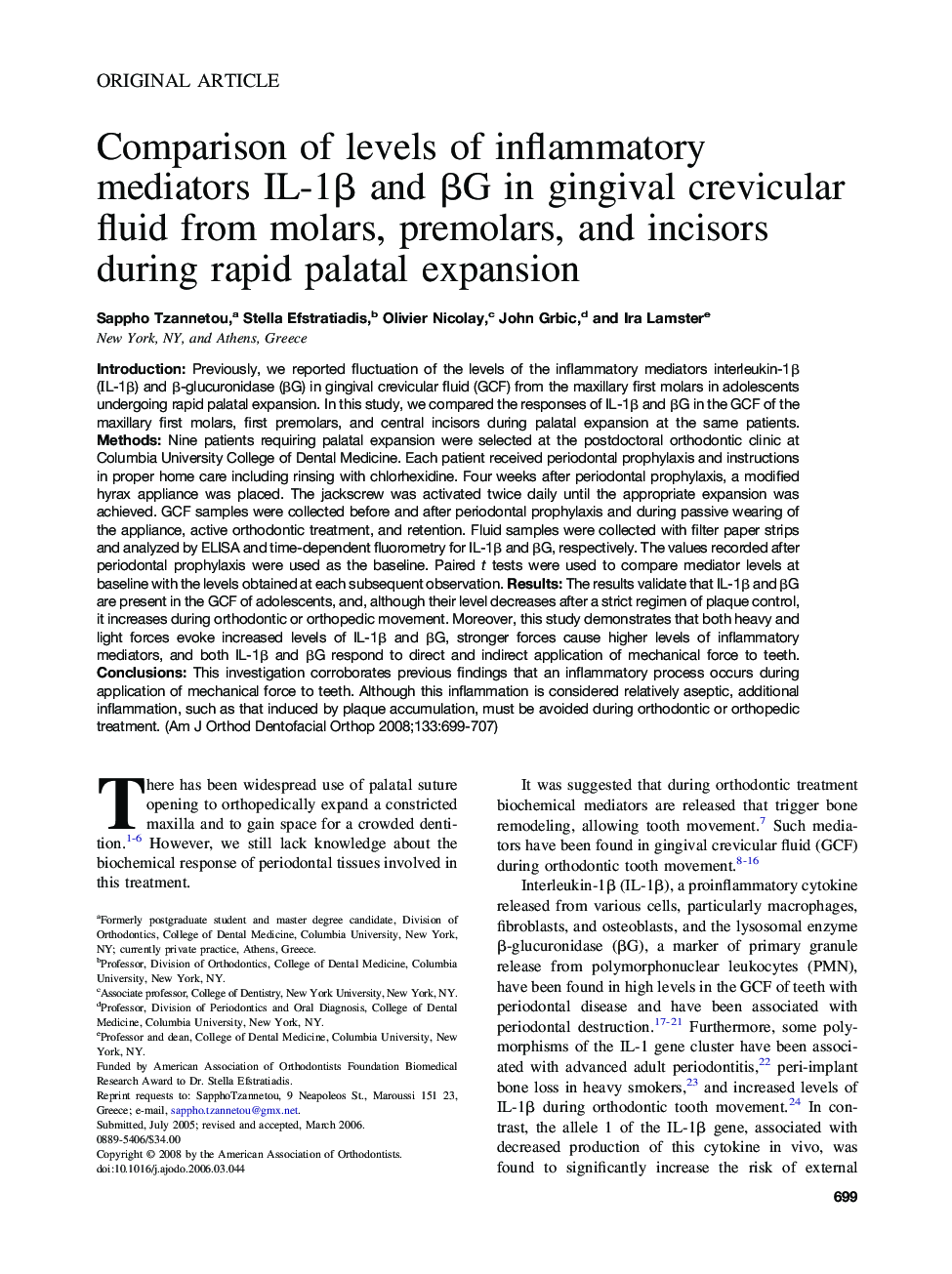| Article ID | Journal | Published Year | Pages | File Type |
|---|---|---|---|---|
| 3120238 | American Journal of Orthodontics and Dentofacial Orthopedics | 2008 | 9 Pages |
Introduction: Previously, we reported fluctuation of the levels of the inflammatory mediators interleukin-1β (ΙL-1β) and β-glucuronidase (βG) in gingival crevicular fluid (GCF) from the maxillary first molars in adolescents undergoing rapid palatal expansion. In this study, we compared the responses of IL-1β and βG in the GCF of the maxillary first molars, first premolars, and central incisors during palatal expansion at the same patients. Methods: Nine patients requiring palatal expansion were selected at the postdoctoral orthodontic clinic at Columbia University College of Dental Medicine. Each patient received periodontal prophylaxis and instructions in proper home care including rinsing with chlorhexidine. Four weeks after periodontal prophylaxis, a modified hyrax appliance was placed. The jackscrew was activated twice daily until the appropriate expansion was achieved. GCF samples were collected before and after periodontal prophylaxis and during passive wearing of the appliance, active orthodontic treatment, and retention. Fluid samples were collected with filter paper strips and analyzed by ELISA and time-dependent fluorometry for IL-1β and βG, respectively. The values recorded after periodontal prophylaxis were used as the baseline. Paired t tests were used to compare mediator levels at baseline with the levels obtained at each subsequent observation. Results: The results validate that IL-1β and βG are present in the GCF of adolescents, and, although their level decreases after a strict regimen of plaque control, it increases during orthodontic or orthopedic movement. Moreover, this study demonstrates that both heavy and light forces evoke increased levels of IL-1β and βG, stronger forces cause higher levels of inflammatory mediators, and both IL-1β and βG respond to direct and indirect application of mechanical force to teeth. Conclusions: This investigation corroborates previous findings that an inflammatory process occurs during application of mechanical force to teeth. Although this inflammation is considered relatively aseptic, additional inflammation, such as that induced by plaque accumulation, must be avoided during orthodontic or orthopedic treatment.
